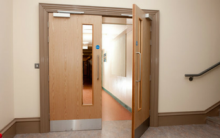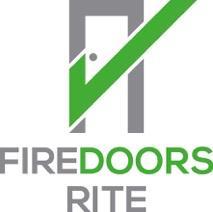The Importance of Fire Doors
The Importance of Fire Doors
Maintenance of Fire Doors
Fire doors are engineered products that provide life and property saving functions in the event of fire. It is important that they are regularly inspected and maintained to permit them to perform at their best on the one and only occasion when they are called upon to do so.
Recent tragedies remind us all how important it is to have doors checked and maintained, and if they require replacing, they must be installed correctly.
Doorsets fitted with hold open devices or swing free type closers should be closed daily, particularly overnight when there is likely to be low building occupancy. For busy 24/7 buildings (e.g. hospitals) fire doors should be closed at least weekly. All fire doors should close effectively from any angle of opening, using only the door closer.
There are a number of reasons why doors may fail to close:-
• Foreign bodies or other objects may be obstructing the door.
• The smoke seals may be incorrectly fitted or damaged.
• If a latch is fitted, it may be malfunctioning or require lubrication.
• The closing device may need adjustment but this must only be done as a last resort and very carefully, to ensure that the door can be opened without undue force.
Intumescent seals should be checked regularly, at intervals not greater than 6 months, and damaged or missing ones replaced. To maintain the designated performance potential, replacement seals should be of the same brand, size and type as the original. Any intumescent seal of the same size as the original, however, is better than none.
Mechanical items such as hinges, locks, latches, closers, floor springs etc are likely to wear over time. Maintenance provisions should comply with the hardware supplier’s recommendations where these are known. Otherwise, locks and latches may require occasional light lubrication. Some hinges use self-lubricating bearings that will not need additional lubrication.
Where it is necessary to replace worn hardware on a fire door, the essential items should be replaced with products to the same specification as the original where possible. Otherwise, hinges, latches, locks, flush bolts, closers and other items of load-bearing or securing hardware should be of the same type and size as the original items and should have been proven for use in timber fire rated doorsets of the required performance. Hardware that has been successfully tested in metal doorsets may not be suitable for use with timber doorsets. Intumescent gaskets may have been used under hinge blades, locks/latches for end plates, strike plates, and/or with closer fittings and in flush bolt recesses. These gaskets should ideally be replaced if possible with gaskets of the same material; alternatively, if undamaged, they should be retained and reused with the new fittings. Intumescent gaskets or mastics used for these applications are usually the low pressure type. Redundant hardware should be carefully removed.
How big should gaps around fire doors be?
Best practice guidance states that the gaps at the sides and top of a timber fire door should be between 2 and 4mm. You can measure the gap with a simple gap gauge. Safelincs provides gap gauges free-of-charge on request.
TRADA Q-Mark fire door scheme
The woodworking association BM TRADA uses a system known as Q-Mark, in which a series of coloured plugs is inserted into the door to indicate the fire door type, member details, the scope of certification during specification and installation, and service history.
For more details visit the BM TRADA website at www.bmtrada.com, The colour coding information is summarized on a laminated plastic card, available free of charge from BM TRADA: contact enquiries@bmtrada.com.
Published February 2018


